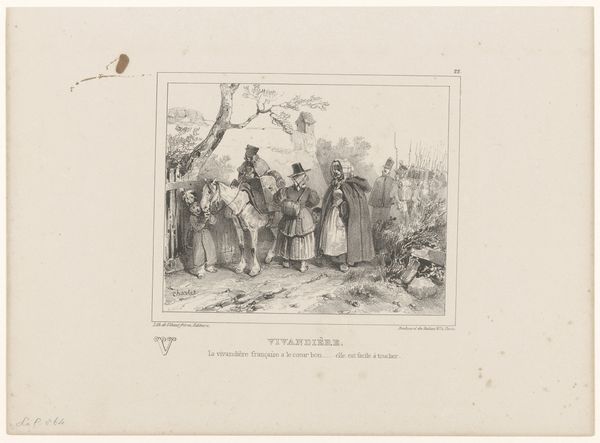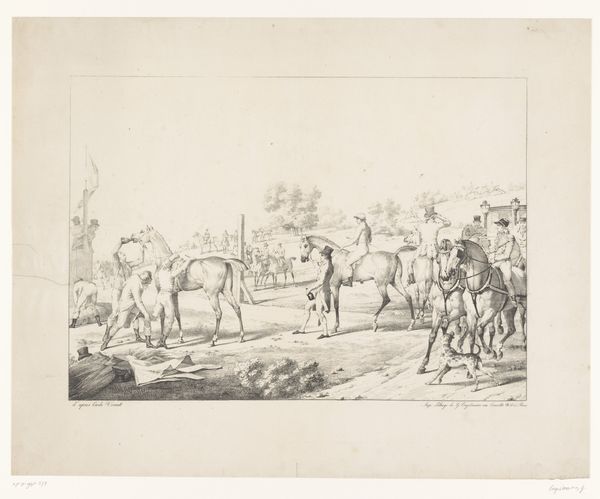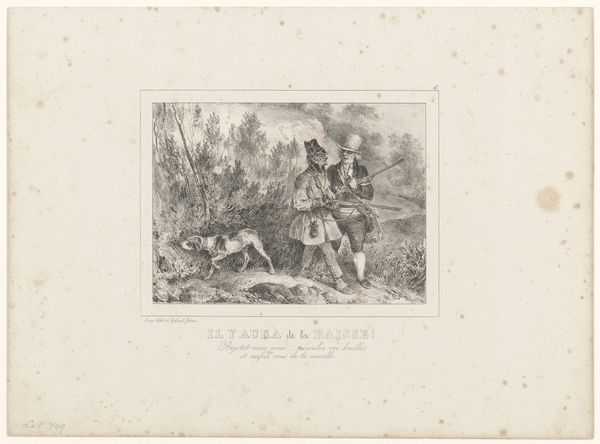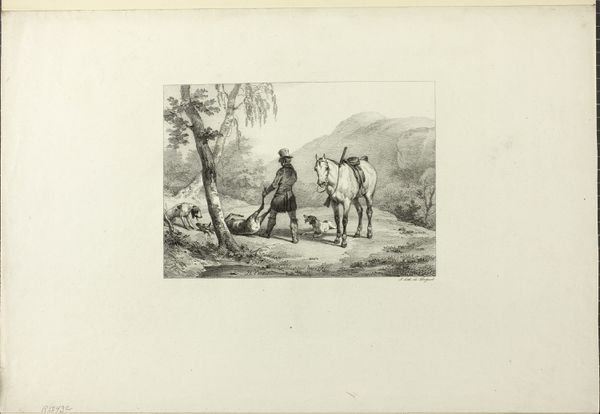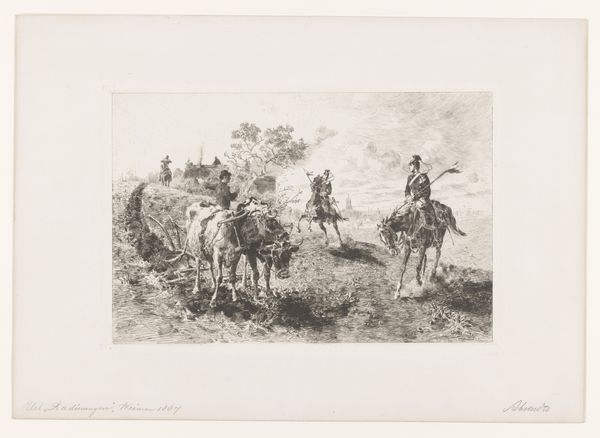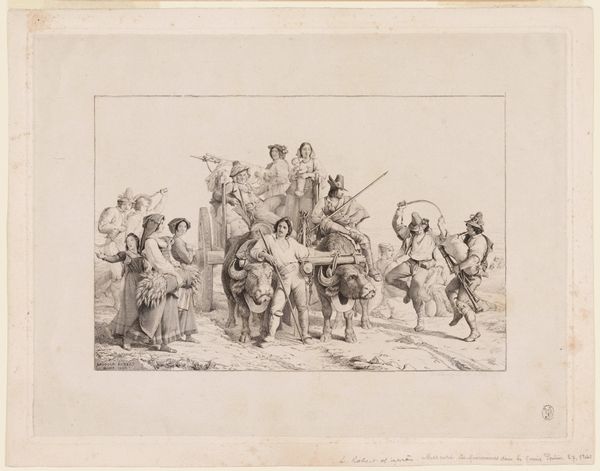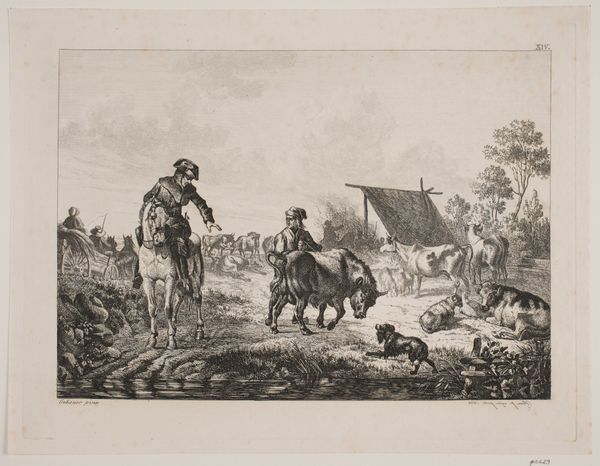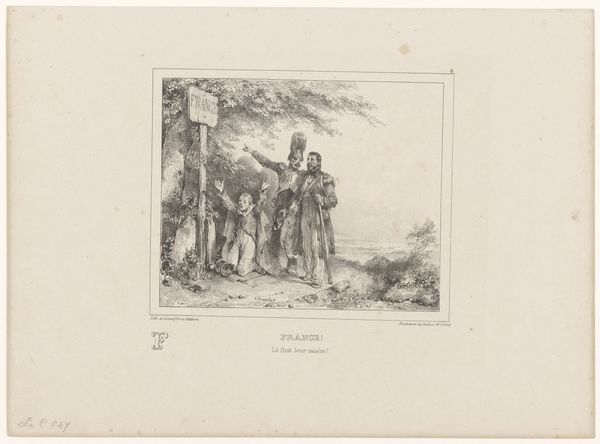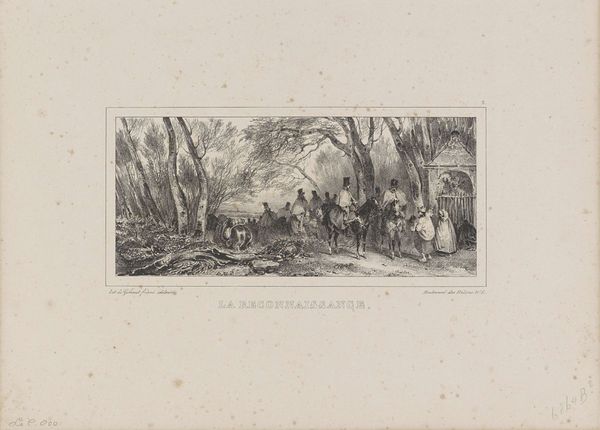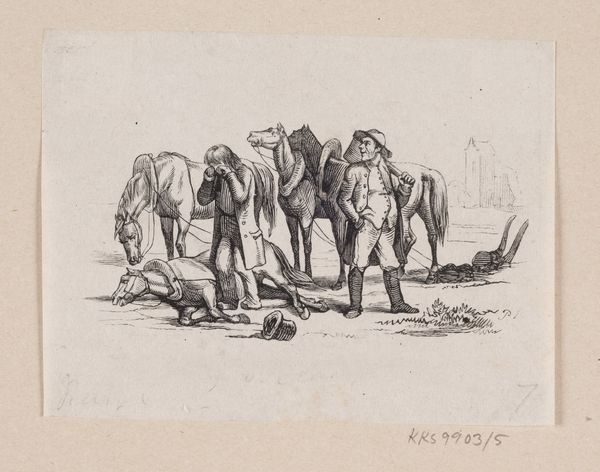
drawing, lithograph, print, paper
#
drawing
#
lithograph
# print
#
landscape
#
figuration
#
paper
#
romanticism
#
orientalism
#
france
#
genre-painting
Dimensions: 117 × 183 mm (image); 186 × 266 mm (sheet)
Copyright: Public Domain
Curator: Immediately I notice the contrast – the crisp detail in the figures set against the sparser rendering of the landscape behind. Editor: Here we have a lithograph and drawing on paper, titled "Rebecca of the Desert," by Victor Adam. The scene depicts an encounter in, I presume, a desert environment, hence the title. What stands out to me is how this print facilitates the mass dissemination of orientalist fantasies popular in 19th-century France. Curator: The rendering indeed lends itself to that production process. But looking at the figures themselves, their posture, their clothes—one can't help but wonder about the real materials involved, the textures of the cloth, the weight of that water skin…How the artist tries to bring forth that tactile element. Editor: And of course, we must remember that prints like this didn't exist in a vacuum. "Rebecca of the Desert" needs to be viewed in the context of French colonialism and its fascination with North Africa and the Middle East. The very act of producing and circulating this image contributed to a broader narrative that legitimized French expansion and domination. Curator: I agree, the social context is undeniable. However, I keep thinking about the anonymous laborers who made the paper, mixed the inks, and operated the presses. What were their working conditions? Their access to these exotic locales which their labor reproduced as image? This process is not an innocent thing, or one free of power dynamics itself. Editor: Absolutely. And let’s consider its placement. Was this meant to be displayed in a gallery? A bourgeois home? How does that affect our interpretation of the piece? And even the title—"Rebecca"—suggests an attempt to link this orientalist fantasy to a recognizable, perhaps even biblical, narrative for a European audience. Curator: Indeed. And what about the composition choices – why are the figures clustered here instead of more fully enmeshed into the depicted nature of the desert, one where scarcity defines much human and other activity, and dictates what materials are used? The production process here itself has enabled, perhaps ironically, a particular perspective of plenty for the European. Editor: That’s a compelling point. I'd say, in conclusion, that understanding its material production and its social-historical placement unlocks a richer understanding of "Rebecca of the Desert". Curator: For me, seeing how those human material relationships play out in its production opens into other dimensions of what this art can be "saying."
Comments
No comments
Be the first to comment and join the conversation on the ultimate creative platform.
